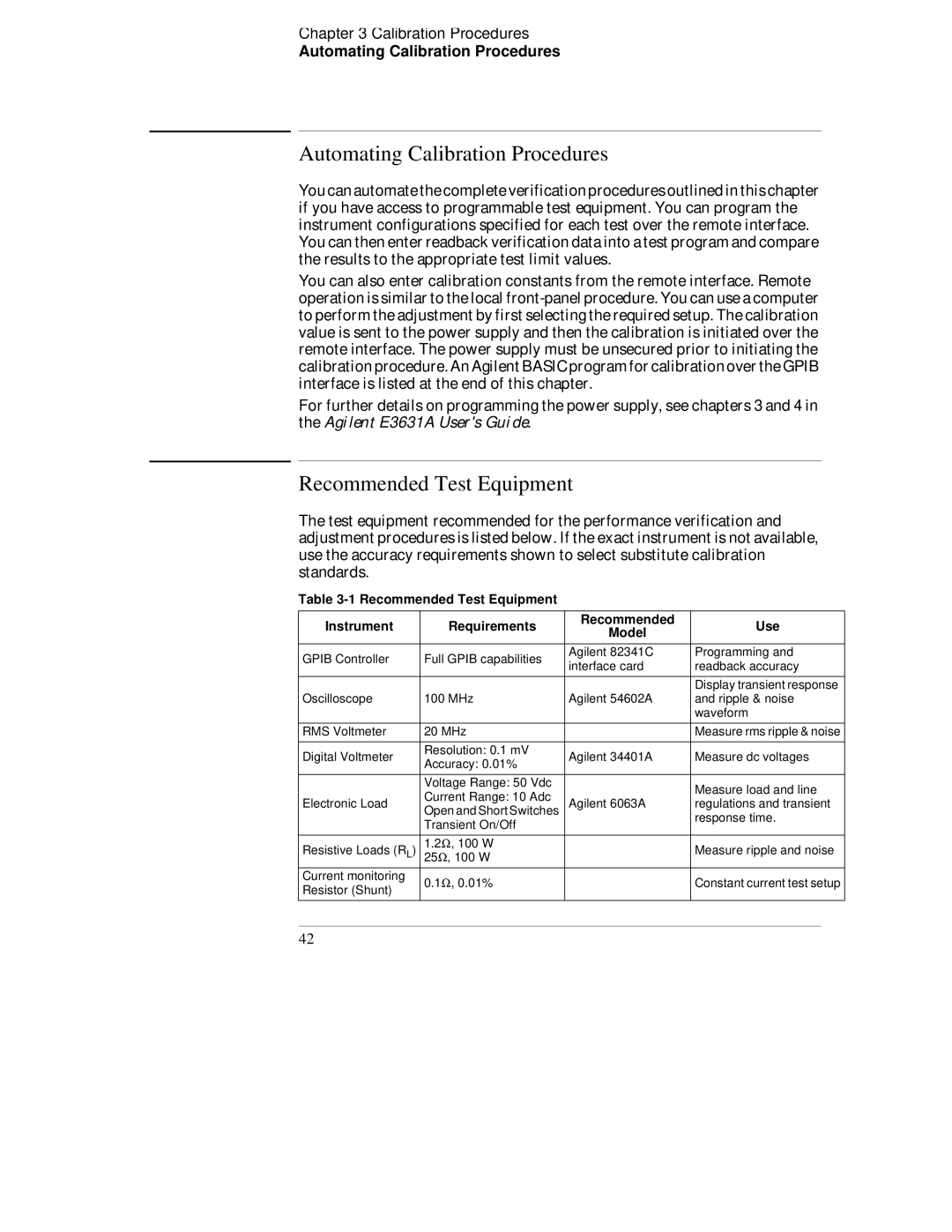
Chapter 3 Calibration Procedures
Automating Calibration Procedures
Automating Calibration Procedures
You can automate the complete verification procedures outlined in this chapter if you have access to programmable test equipment. You can program the instrument configurations specified for each test over the remote interface. You can then enter readback verification data into a test program and compare the results to the appropriate test limit values.
You can also enter calibration constants from the remote interface. Remote operation is similar to the local
For further details on programming the power supply, see chapters 3 and 4 in the Agilent E3631A User's Guide.
Recommended Test Equipment
The test equipment recommended for the performance verification and adjustment procedures is listed below. If the exact instrument is not available, use the accuracy requirements shown to select substitute calibration standards.
Table 3-1 Recommended Test Equipment
Instrument
GPIB Controller
Oscilloscope
RMS Voltmeter
Digital Voltmeter
Electronic Load
Resistive Loads (RL)
Current monitoring Resistor (Shunt)
Requirements
Full GPIB capabilities
100 MHz
20 MHz
Resolution: 0.1 mV
Accuracy: 0.01%
Voltage Range: 50 Vdc
Current Range: 10 Adc
Open and Short Switches
Transient On/Off
1.2Ω, 100 W
25Ω, 100 W
0.1Ω, 0.01%
Recommended
Model
Agilent 82341C interface card
Agilent 54602A
Agilent 34401A
Agilent 6063A
Use
Programming and readback accuracy
Display transient response and ripple & noise waveform
Measure rms ripple & noise
Measure dc voltages
Measure load and line regulations and transient response time.
Measure ripple and noise
Constant current test setup
42
